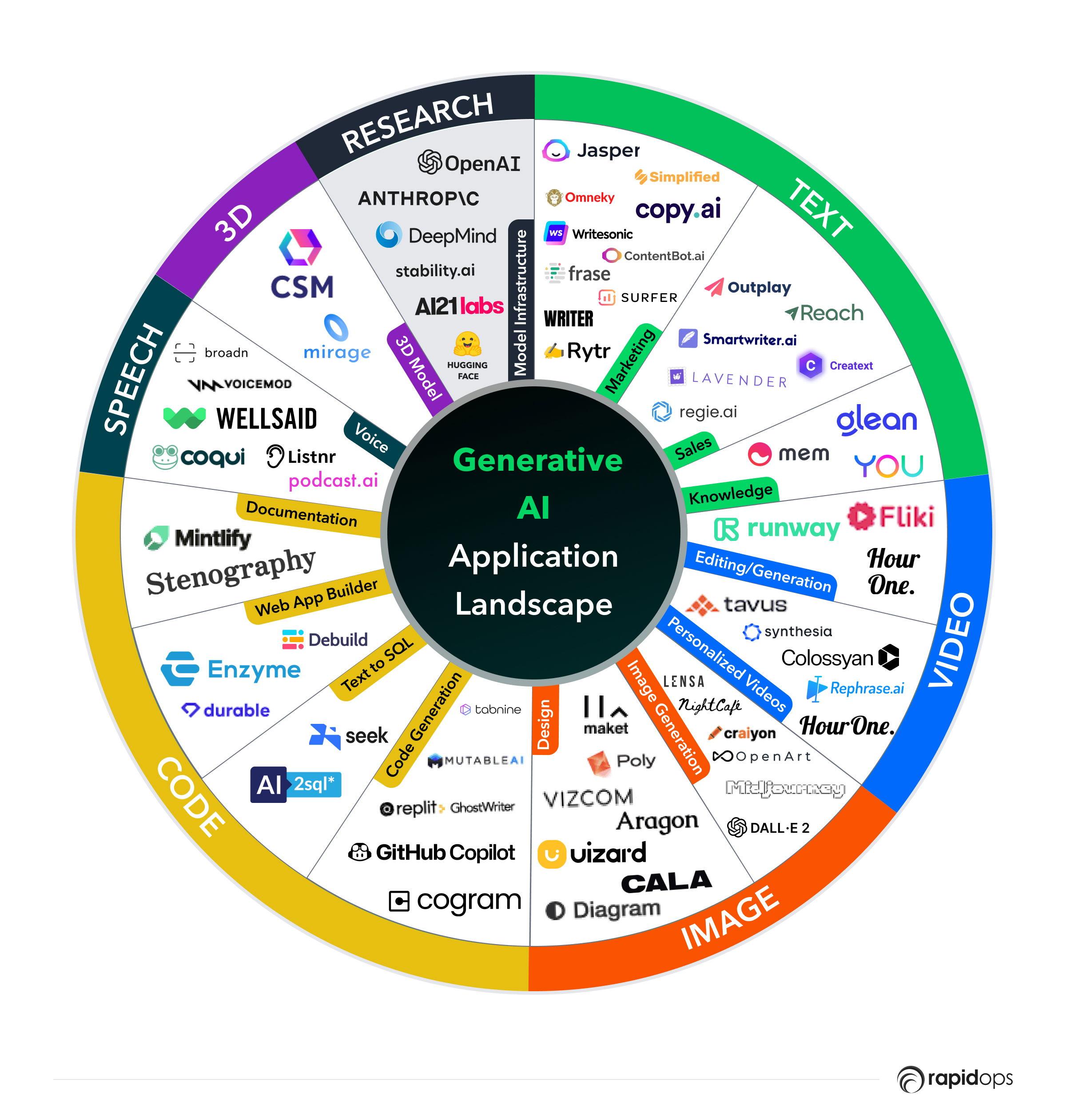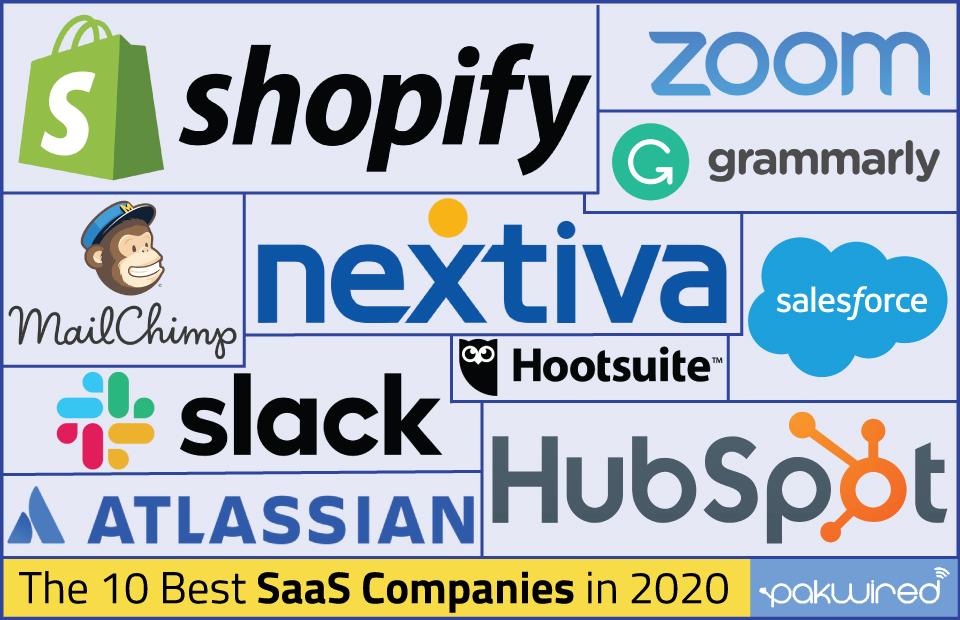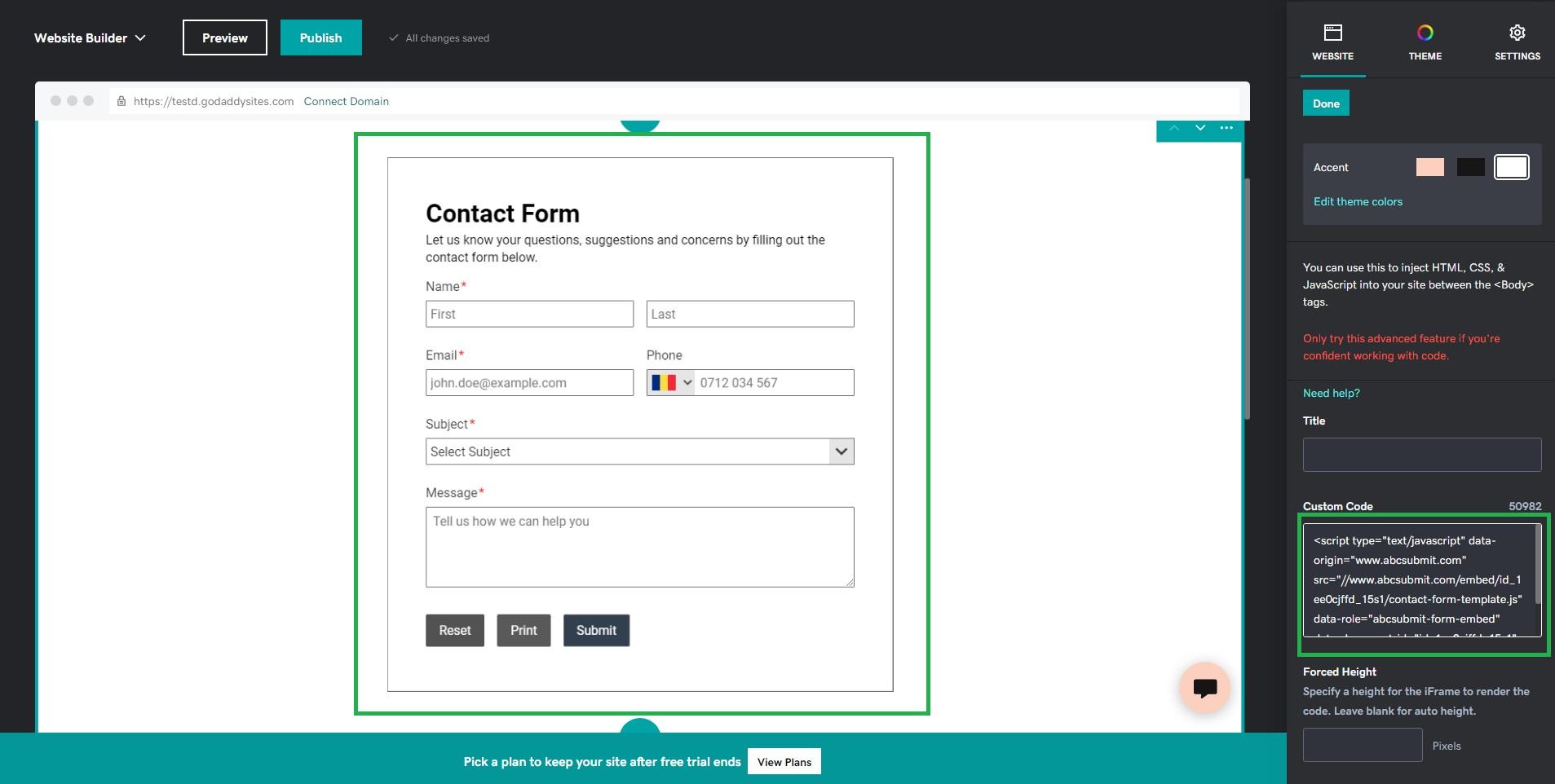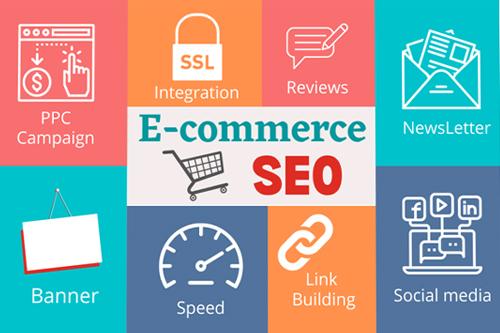
Introduction
If you’re running an online store, you know that having a stunning website and a fantastic product lineup is just the beginning. The real challenge lies in making sure that potential customers can actually find you among the sea of competitors. That’s where Ecommerce SEO comes into play! Think of it as the secret sauce that not only enhances your visibility on search engines but also drives more traffic—and ultimately sales—to your online shop.
But with so many factors to juggle, how do you ensure your store is optimized to capture attention? That’s exactly what we’re diving into today. In this article, we’ll walk you through a comprehensive Ecommerce SEO checklist featuring 16 essential optimizations that can transform your online presence. Whether you’re just starting out or looking to refine your existing strategy, these actionable tips will help you climb the search rankings and attract customers who are eager to buy. Ready to boost your store’s visibility and sales? Let’s get started!
Essential Keyword Research for Your Ecommerce Success
Keyword research is the backbone of any successful ecommerce strategy. Without understanding what your potential customers are searching for, you risk losing visibility in a crowded marketplace. Start by identifying the key terms and phrases that are relevant to your products and services. This will help you create content that resonates with your audience and drives traffic to your store.
To begin your keyword research, leverage tools like Google Keyword Planner, Ahrefs, or SEMrush. These platforms can provide insights into search volume, competition, and related keywords. Focus on long-tail keywords, as they often have less competition and a higher conversion rate. For example, instead of targeting the broad term “shoes,” consider more specific phrases like “women’s running shoes for flat feet.”
Don’t overlook the importance of analyzing your competitors. Check out the keywords they’re ranking for and identify gaps in their strategy. This not only gives you ideas for your own keyword list but also helps you understand the landscape of your market. You can use tools to spy on their backlinks and content, giving you a competitive edge.
As you compile your list of keywords, categorize them into themes or topics. This organization will help you structure your website and content strategy effectively. Consider creating a simple table like the one below to keep track of your keywords:
| Keyword | Search Volume | Competition | Content Ideas |
|---|---|---|---|
| Women’s running shoes | 12,000 | Medium | Blog on the best brands |
| Flat feet shoes | 8,000 | Low | Guides on choosing the right shoes |
| Best shoes for marathon | 5,500 | High | Expert reviews and recommendations |
Once you have identified your main keywords, it’s essential to incorporate them strategically throughout your website. Utilize them in important areas such as:
- Product titles
- Meta descriptions
- Headings
- Image alt texts
- URL slugs
However, while it’s important to use keywords, don’t sacrifice quality for quantity. Make sure your content remains natural and engaging for your visitors. Search engines prioritize user experience, so compelling, informative content will not only attract more visitors but also keep them on your site longer.
remember that keyword research is not a one-time task. Regularly revisit and refine your keyword strategy based on emerging trends and changes in consumer behavior. By staying proactive, you’ll ensure that your ecommerce store remains visible and competitive in the ever-evolving online landscape.
Crafting Compelling Product Descriptions That Sell
When it comes to online shopping, product descriptions are your chance to connect with potential customers and encourage them to make a purchase. Creating descriptions that not only inform but also entice buyers is crucial for increasing conversions. Start by understanding your target audience—what are their pain points, desires, and preferences? Tailoring your language and tone to resonate with them will significantly enhance the effectiveness of your descriptions.
Utilize emotionally charged language to evoke feelings and create a sense of urgency. Words like “exclusive,” “limited time,” and “must-have” can stir excitement. Make each product feel like a solution to a problem or a key to a dream, making it irresistible to potential buyers.
- Highlight Benefits Over Features: While it’s important to include product specifications, focusing on the benefits can make the product more appealing. Instead of just stating that a jacket is waterproof, emphasize how it will keep customers dry and comfortable during unexpected downpours.
- Use Storytelling: People love stories. Create a narrative around your product that reflects its usage in real-life scenarios. For example, tell a story about how your kitchen gadget can turn a daunting cooking task into a delightful experience.
- Incorporate Visuals: Images can say a thousand words, but pairing them with compelling descriptions amplifies their impact. Use high-quality images and consider adding video demonstrations to showcase the product in action.
- Highlight Unique Selling Points: What makes your product stand out from the competition? Make sure to clearly state unique features, whether it’s sustainability, craftsmanship, or innovative design.
Don’t forget about SEO optimization when crafting your descriptions. Use relevant keywords naturally throughout your text to improve search visibility. Think about what potential customers might type into Google when searching for your product, and incorporate those terms without compromising the flow of your writing.
Consider organizing your information into bite-sized chunks to enhance readability. Using bullet points for key features or benefits can make it easier for customers to skim through the information and quickly grasp what you’re offering.
| Element | Description |
|---|---|
| Title | Clear and attention-grabbing, ideally containing a key benefit. |
| Opening Sentence | Engaging hook that piques interest immediately. |
| Body Text | Focus on benefits, storytelling, and unique features. |
| Call to Action | Encourage immediate purchase with phrases like “Buy Now” or “Limited Stock!” |
always remember to test and iterate. Monitor which descriptions perform well and which ones don’t, and be willing to tweak your approach based on customer feedback and sales data. By continuously refining your product descriptions, you can ensure they remain effective tools in driving sales and enhancing the customer experience.
Optimizing Your Product Images for Search Engines
When it comes to ecommerce, product images are not just about aesthetics; they play a vital role in SEO. Optimizing your images can significantly boost your visibility in search engine results, helping you attract more potential customers. Here are some essential tips to consider:
- Use Descriptive File Names: Instead of generic names like “IMG1234.jpg,” rename your files to something descriptive. For example, “red-leather-handbag.jpg” tells both users and search engines what the image is about.
- Implement Alt Text: Alt text is crucial for accessibility and SEO. Include targeted keywords that describe the image but keep it natural and relevant. For instance, “Stylish red leather handbag for women” not only helps with indexing but also assists visually impaired users.
- Choose the Right Format: Use JPEG for photographs, PNG for graphics with fewer than 16 colors, and SVG for logos. Each format has its benefits, so select the one that best suits your image type to ensure quality and fast loading times.
- Optimize Image Size: Large images can slow down your site, negatively impacting user experience and SEO. Use tools like TinyPNG or ImageOptim to compress images without sacrificing quality. Aim for a balance that preserves clarity while minimizing file size.
- Utilize Structured Data: Implement schema markup for products, which can enhance how your images appear in search results. This structured data provides search engines with specific information about your products, potentially leading to rich snippets that include product images.
- Leverage Responsive Images: Use the ‘srcset’ attribute to serve different image sizes based on the user’s device. This ensures that your images look great on all screens without causing slow loading times, which is essential for both SEO and user satisfaction.
- Include Captions When Relevant: Captions can provide context to your images and offer additional keyword opportunities. This can help improve user engagement and give search engines more content to index.
Here’s a quick reference table summarizing the image optimization techniques:
| Technique | Description |
|---|---|
| File Names | Descriptive and keyword-rich names for better indexing. |
| Alt Text | Text that describes images for SEO and accessibility. |
| Image Formats | Choose the best format for quality and performance. |
| Image Size | Compress images to improve loading speed. |
| Structured Data | Use schema markup for enhanced search results. |
| Responsive Images | Adapt images to different screen sizes for optimal display. |
| Captions | Add context and keywords to improve engagement. |
By implementing these strategies, you can create a more effective and user-friendly ecommerce site that not only captivates visitors but also ranks higher in search results. Remember, every small optimization contributes to a more significant impact on your overall SEO strategy!
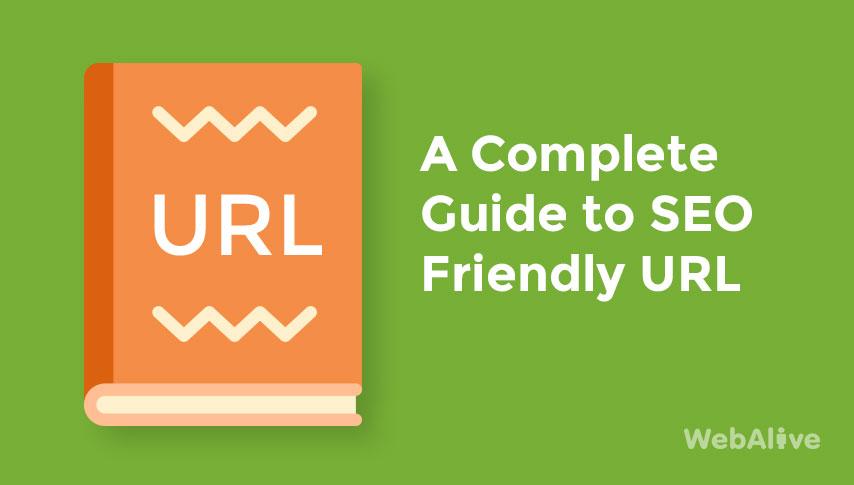
Creating SEO-Friendly URLs That Boost Your Rankings
When it comes to boosting your online store’s visibility, one of the most overlooked aspects is the structure of your URLs. A well-crafted URL is not just user-friendly; it also plays a pivotal role in how search engines rank your pages. Here’s how to create URLs that are both SEO-friendly and enticing to your audience.
First and foremost, simplicity is key. A URL should clearly communicate the content of the page it leads to. Avoid using complex characters or unnecessary parameters that could confuse users and search engines alike. Opt for a straightforward structure that encompasses relevant keywords, like:
- www.yourstore.com/category/product-name
- www.yourstore.com/electronics/smartphone-xyz
Including target keywords in your URLs can significantly enhance your SEO efforts. Search engines use the words in a URL to understand what the page is about. Aim to incorporate primary keywords naturally, but be wary of keyword stuffing, as it can have the opposite effect.
Remember to keep your URLs as short as possible while still being descriptive. Shorter URLs are easier to share, read, and remember. An ideal URL length is typically between 50-60 characters. If your URLs are too lengthy, consider removing unnecessary words or extra parameters.
Another important factor is the use of hyphens to separate words. Hyphens are preferred over underscores as they are treated as space by search engines. For instance, instead of:
www.yourstore.com/electronics/smartphone_xyz
Use:
www.yourstore.com/electronics/smartphone-xyz
Also, don’t forget the importance of canonical URLs. If you have multiple URLs that lead to the same content, canonical tags help search engines understand which URL is the preferred one. This reduces the risk of duplicate content penalties and consolidates ranking power to a single URL.
To illustrate the importance of URL structure, here’s a simple comparison of effective vs. ineffective URLs:
| Effective URL | Ineffective URL |
|---|---|
| www.yourstore.com/handbags/leather-tote | www.yourstore.com/prod?id=12345&cat=5678 |
| www.yourstore.com/books/fiction-best-sellers | www.yourstore.com/books.php?category=fiction&sort=popular |
Lastly, always ensure that your URLs are mobile-friendly. With the rise of mobile shopping, a well-optimized URL structure will make a significant difference in user experience across devices. Test your URLs on various screen sizes to ensure they display neatly and are easy to navigate.
By implementing these strategies, you can create URLs that not only enhance your SEO but also improve the overall user experience on your ecommerce site. Remember, every little optimization counts towards climbing the ranks in search engine results!

The Importance of Mobile Optimization for Your Online Store
In today’s fast-paced digital world, the majority of consumers are browsing and shopping on their mobile devices. If your online store isn’t optimized for mobile, you’re missing out on a huge chunk of potential sales. A seamless mobile experience can significantly enhance user engagement and boost your conversion rates.
Consider this: over 50% of all eCommerce traffic comes from mobile users. This trend continues to rise, making it crucial for online retailers to ensure their sites are not just accessible but also user-friendly on smaller screens. A well-optimized mobile site can help you stand out in a crowded market.
Mobile optimization goes beyond just making sure your site looks good on phones. It involves:
- Responsive Design: Ensures your website adapts to different screen sizes, keeping the layout clean and navigable.
- Fast Loading Times: Mobile users expect quick access; slow sites can lead to high bounce rates.
- Touch-Friendly Navigation: Buttons and links should be easy to click, even on smaller devices.
- Streamlined Checkout Process: Simplifying forms and reducing steps can significantly enhance the mobile shopping experience.
To illustrate the impact of mobile optimization, let’s look at a few statistics:
| Statistic | Percentage |
|---|---|
| Mobile eCommerce Sales Growth | 68% YoY |
| Users Abandoning Carts | 75% due to poor mobile experience |
| Consumer Preference for Mobile Shopping | 80% prefer mobile for convenience |
Having a mobile-optimized store also positively affects your SEO ranking. Search engines like Google prioritize mobile-friendly sites in their results, meaning that a well-optimized site can lead to more organic traffic. This is a win-win situation: better user experience and improved visibility in search results.
If you’re still on the fence about mobile optimization, think about your target audience. They are busy, on-the-go, and expect convenience. By providing them with a mobile-friendly shopping experience, you’re not just meeting expectations; you’re exceeding them, fostering loyalty, and building a strong customer base.
investing in mobile optimization is no longer an option; it’s a necessity for any serious online retailer. Embrace the shift towards mobile commerce, and make sure your online store is ready to capture the opportunity.
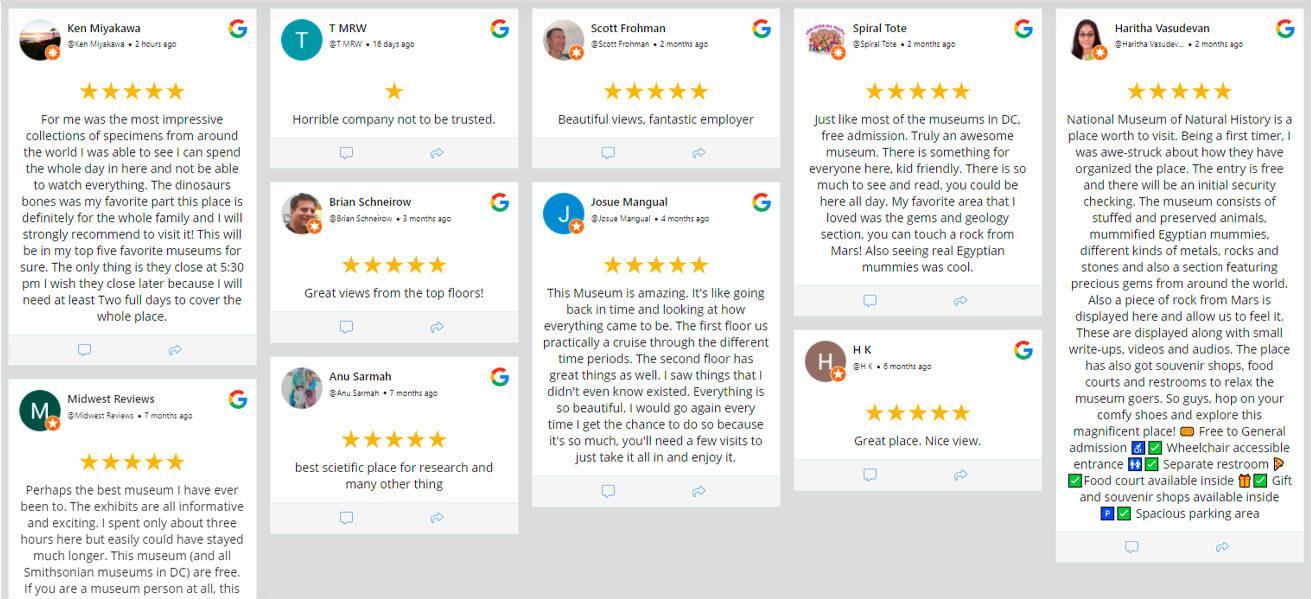
Leveraging Customer Reviews to Enhance Your SEO
Customer reviews are more than just feedback; they are a goldmine for enhancing your SEO strategy. When potential buyers search for products, they often look for social proof, which is where reviews come into play. By leveraging customer reviews, you can improve your search rankings and drive more organic traffic to your online store.
Incorporate Reviews into Product Descriptions
Including snippets of customer reviews directly in your product descriptions can add valuable content to your pages. Search engines love fresh, relevant content, and reviews often contain keywords that potential customers are using to search. Highlighting positive reviews not only provides authentic information but also enhances your SEO efforts.
Optimize Review Pages
If you have a dedicated reviews page, make sure it is optimized for SEO. Use relevant keywords in the URL, title, and meta description. Additionally, consider structuring your reviews with schema markup. This not only helps search engines understand the content better but can also result in rich snippets, such as star ratings, in search results, which can dramatically increase your click-through rates.
Encourage User-Generated Content
User-generated content (UGC) in the form of reviews can significantly boost your site’s visibility. Encourage your customers to leave reviews by sending follow-up emails after purchase or offering incentives like discounts on future purchases. More reviews mean more unique content on your site, which is beneficial for SEO.
Respond to Reviews
Take the time to respond to both positive and negative reviews. Engaging with your customers not only builds trust but also signals to search engines that your business is active and customer-focused. Additionally, your responses can include relevant keywords, further enhancing your SEO. This interaction creates a rich tapestry of content that search engines appreciate.
Utilize Social Proof
Integrate customer reviews into your social media marketing strategy. Sharing positive reviews on platforms like Instagram or Facebook can drive traffic back to your website, improving your SEO indirectly. When users share or comment on your posts, it creates backlinks and increases engagement, both of which are crucial for SEO.
Monitor and Analyze Review Trends
Pay attention to the feedback you receive. Use tools like Google Analytics to track how reviews impact your website’s performance. Look for trends in keywords within the reviews that can be incorporated into your SEO strategy. By understanding what customers love or dislike, you can optimize your content and products to meet their needs better, ultimately improving your SEO.
Table: Benefits of Customer Reviews for SEO
| Benefit | Description |
|---|---|
| Fresh Content | Regular reviews provide new content that search engines favor. |
| Keywords | Reviews often contain keywords that boost search visibility. |
| Social Proof | Builds trust with potential buyers, increasing conversions. |
| Engagement | Responding to reviews enhances customer relationships and signals activity to search engines. |
By effectively harnessing the power of customer reviews, you’re not just enhancing your SEO; you’re building a community around your brand. This community will foster loyalty, drive repeat business, and ultimately lead to greater success for your online store. Embrace reviews, and watch your SEO efforts flourish!
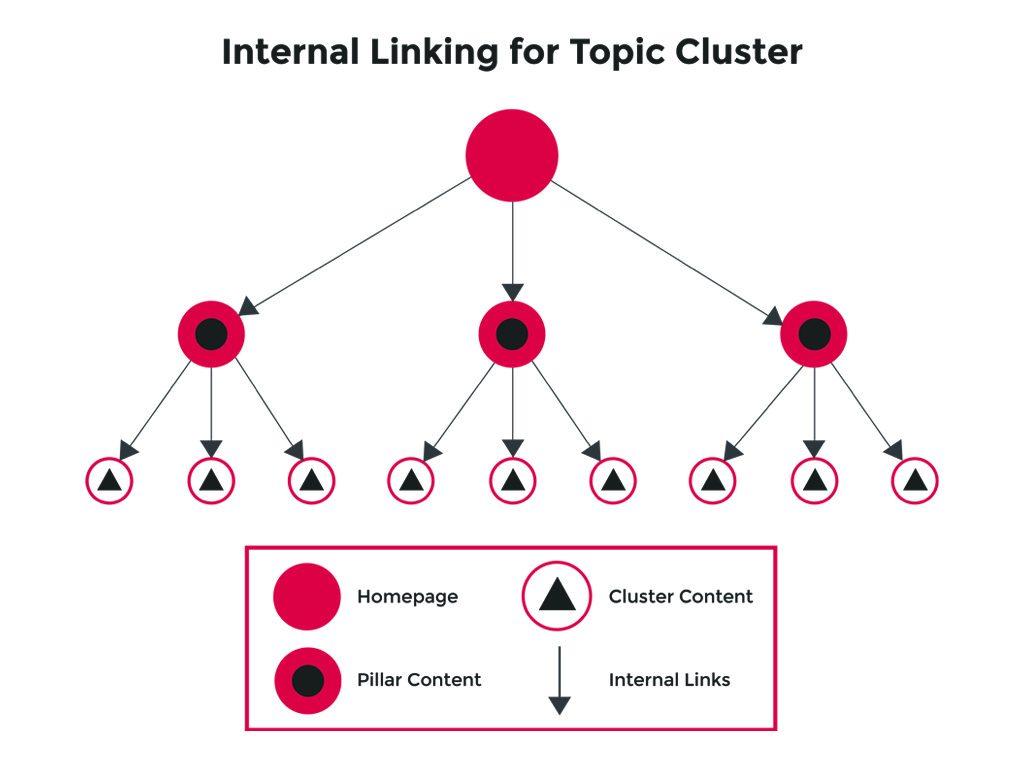
Building a Solid Internal Linking Structure
Creating a robust internal linking structure is essential for enhancing your ecommerce site’s SEO performance. Internal links guide visitors through your site, helping them discover related products and content while also signaling to search engines how your pages relate to one another. This can significantly improve user experience and increase the likelihood of conversions.
To effectively build your internal linking strategy, consider the following key components:
- Prioritize Important Pages: Identify which product pages, category pages, or content are crucial for your business. Ensure these pages are linked frequently throughout your site to direct both users and search engines to your most valuable assets.
- Use Descriptive Anchor Text: Instead of generic phrases like “click here,” use keyword-rich anchor text that describes the linked page. This helps search engines understand the context of the link and can improve the rankings of the linked page.
- Link to Relevant Products: When writing product descriptions or blog posts, seamlessly incorporate links to related items. This not only keeps users on your site longer but can also lead to increased sales by promoting additional purchases.
- Create a Comprehensive Sitemap: A well-structured sitemap helps search engines crawl your site more effectively. Ensure that your most important pages are listed, and consider creating an XML sitemap for better indexing.
Additionally, you can use a few simple strategies to enhance your internal linking:
- Utilize Breadcrumbs: Implement breadcrumb navigation on your site. This not only aids user navigation but also provides additional internal links pointing back to category and subcategory pages.
- Highlight Sale or Featured Products: If you have special promotions or new arrivals, create dedicated landing pages and link to them throughout your site. This drives traffic to those pages and can boost conversions during peak shopping periods.
It’s also beneficial to regularly review your internal linking strategy. Analyze your site’s performance through tools like Google Analytics to see which pages are receiving traffic and which are not. This can inform adjustments to your internal linking structure to ensure it’s as effective as possible.
consider the following quick reference table to track your internal linking efforts:
| Page Type | Link Frequency | Anchor Text Examples |
|---|---|---|
| Product Pages | 3-5 links per page | “Shop Now,” “Similar Products” |
| Blog Posts | 2-4 links per post | “Learn more about,” “Check out our range” |
| Category Pages | 4-6 links per page | “Explore our collection,” “Top-rated items” |
By focusing on these strategies, you can create a solid internal linking structure that enhances both user engagement and your site’s overall SEO effectiveness.
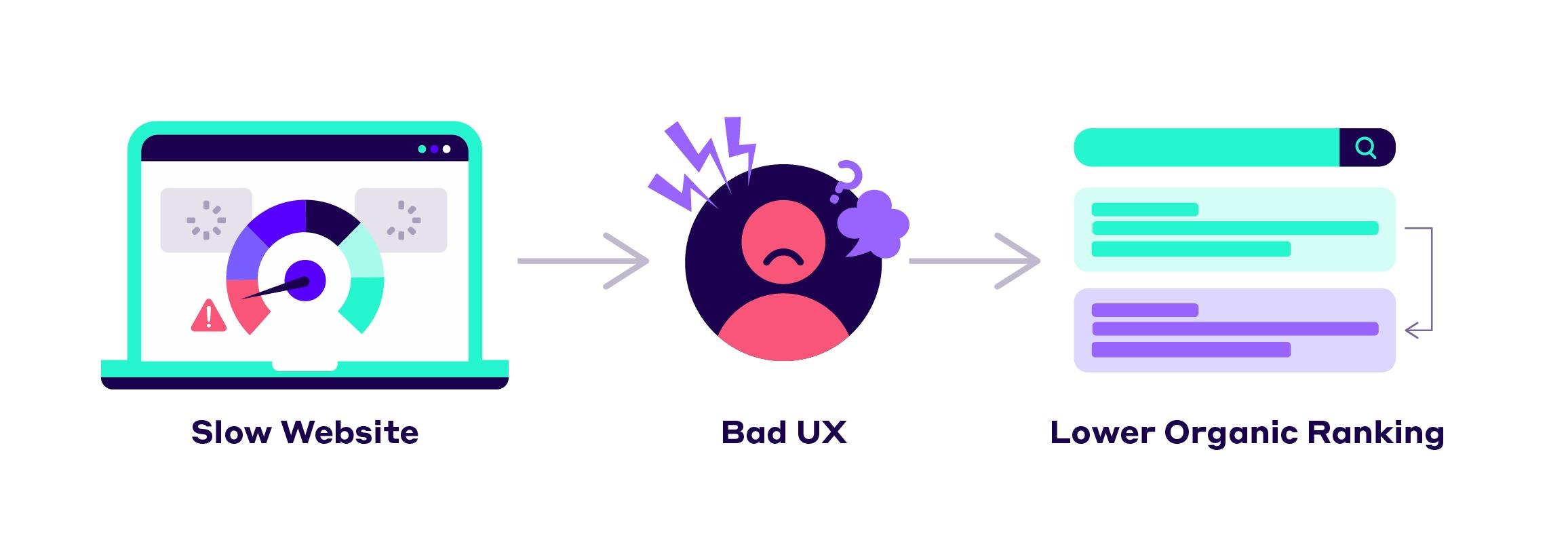
Maximizing Your Site Speed for Better User Experience
When it comes to online shopping, speed is everything. A slow-loading website can frustrate users and drive them away, leading to lost sales and a negative perception of your brand. To keep your visitors engaged and satisfied, it’s crucial to prioritize site speed. Let’s explore some effective strategies that can help enhance your online store’s performance.
Optimize Images: Images can significantly slow down your site if they’re not optimized. Use formats like JPEG for photos and PNG for graphics, and employ tools to compress images without sacrificing quality. Additionally, consider using lazy loading so that images load only when they are about to enter the viewport, which can drastically improve loading times.
Minify CSS, JavaScript, and HTML: The code that makes up your website can often be bloated with unnecessary characters. By minifying your CSS, JavaScript, and HTML files, you can reduce their size and speed up load times. There are many plugins available for WordPress that can automate this process, making it easy even for non-tech-savvy users.
Utilize Browser Caching: Caching allows frequently accessed files to be stored on a visitor’s browser, so they don’t need to be downloaded again on subsequent visits. Implementing caching can make your site significantly faster for returning users. Make sure to configure your caching settings correctly to get the most out of this optimization.
Choose a Reliable Hosting Provider: The speed of your website largely depends on your hosting provider. Opt for a host that offers high performance, robust uptime, and server locations close to your target audience. Consider using a Content Delivery Network (CDN) to distribute your content across various locations worldwide, improving load times for users regardless of their geographical location.
Limit Redirects: Each redirect creates an additional HTTP request, which can slow down your website. Be mindful of how many redirects you have in place and eliminate any that aren’t necessary. This will streamline the user experience and enhance loading speeds.
Implement AMP (Accelerated Mobile Pages): If your audience primarily browses on mobile devices, consider incorporating AMP technology. This framework is designed to create fast-loading pages for mobile users, improving the overall mobile experience and potentially boosting your search engine rankings.
Regularly Test Your Site Speed: Utilize tools like Google PageSpeed Insights or GTmetrix to monitor your website’s performance. Regular testing helps you identify areas that need improvement and allows you to track the effectiveness of the optimizations you implement.
| Optimization Technique | Benefits |
|---|---|
| Image Optimization | Faster load times, reduced bandwidth usage |
| Minification | Smaller file sizes, improved loading speed |
| Browser Caching | Quicker load for returning visitors |
| Reliable Hosting | Consistent performance, minimal downtime |
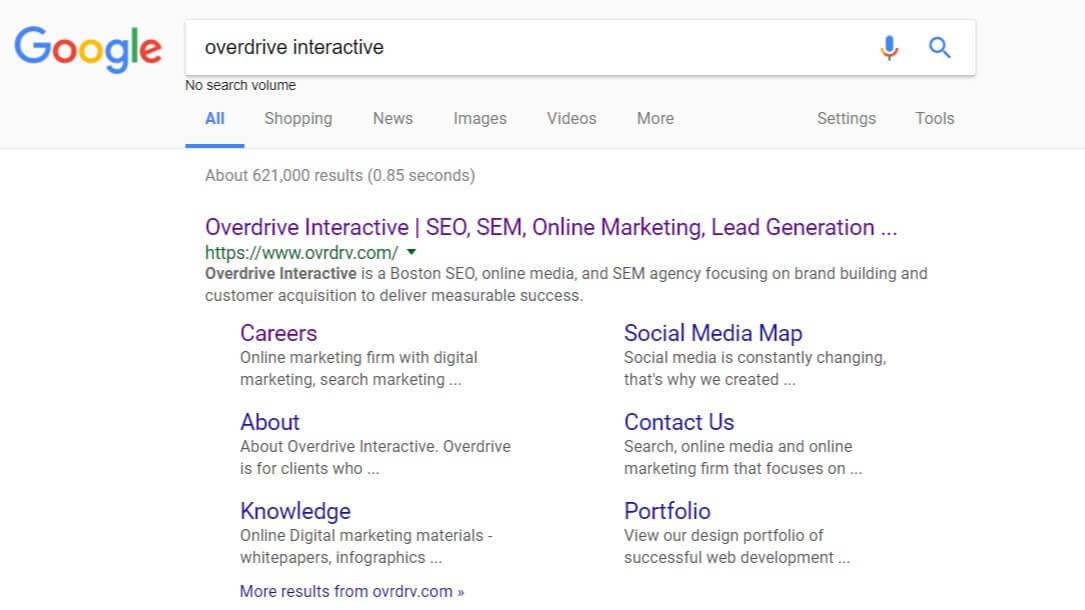
Utilizing Schema Markup to Improve Rich Snippets
In the competitive landscape of ecommerce, standing out in search results is crucial. One effective way to do this is by implementing schema markup. This structured data helps search engines better understand your content, which can lead to enhanced visibility through rich snippets. These snippets provide valuable information at a glance, making your products more appealing to potential customers.
So, how can you utilize schema markup effectively? Here are some key areas to focus on:
- Product Schema: Use product schema to highlight details like price, availability, and reviews. This can directly influence click-through rates by providing essential information right in the search results.
- Review Schema: Show off customer feedback directly in the search results. By displaying star ratings and review counts, you can build trust and increase click-through likelihood.
- Breadcrumb Schema: Implement breadcrumb schema to provide a clear path back to your site. This not only helps with user navigation but also enhances your site’s appearance in search results.
- FAQ Schema: If you have common questions related to your products or services, using FAQ schema can be a game changer. It allows you to display these questions and answers directly in the search results, further engaging potential customers.
To better illustrate how schema markup can enhance your product listings, consider the following example:
| Schema Type | Benefits |
|---|---|
| Product Schema | Displays price and availability in search results. |
| Review Schema | Highlights customer ratings and feedback. |
| Breadcrumb Schema | Improves navigation and search appearance. |
| FAQ Schema | Engages users with direct answers in search results. |
Implementing schema markup may seem daunting, but various plugins and tools can simplify the process, especially for WordPress users. Popular tools like Yoast SEO and Schema Pro offer user-friendly interfaces for adding and managing schema across your site. With the right tools, you can ensure your ecommerce store is not just optimized for keywords but also for rich snippets.
Don’t forget to test your schema markup using Google’s Structured Data Testing Tool. This will help you verify that your markup is correctly implemented and free of errors before it goes live. A clean and error-free implementation is vital for maximizing the benefits of rich snippets.
keep an eye on your search performance. Once you’ve integrated schema markup, monitor how it affects your click-through rates and overall visibility. This data will not only help you understand the impact of your optimizations but will also guide future enhancements to your ecommerce SEO strategy.
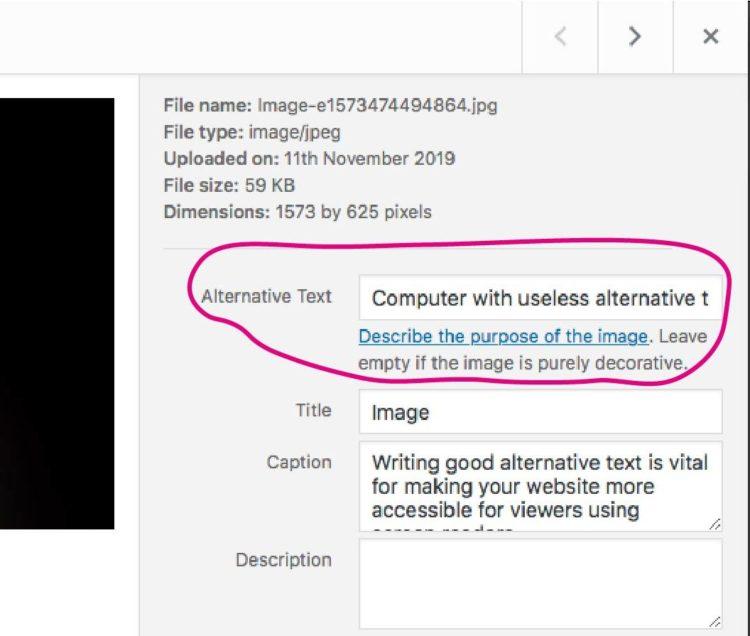
Effective Use of Alt Text for Accessibility and SEO
When it comes to optimizing your ecommerce store, leveraging alt text is a game changer for both accessibility and search engine optimization. Alt text serves as a description for images, providing essential information to users who may have visual impairments. It also allows search engines to better understand the content of your images, which can enhance your site’s SEO performance.
To maximize the impact of alt text, consider the following best practices:
- Be Descriptive: Use clear and concise language that accurately describes the image. Instead of “image1.jpg,” use “red leather handbag on a wooden table.”
- Incorporate Keywords: Include relevant keywords naturally within the alt text. This can help improve your visibility in search results without resorting to keyword stuffing.
- Keep It Short: Aim for a length of around 125 characters. This ensures that your descriptions are easily readable and understood by screen readers.
- Avoid Redundancy: If your image is already described in the surrounding text, there’s no need to repeat that information in the alt text.
Here’s a simple example of how to structure your alt text:
| Image Description | Alt Text Example |
|---|---|
| White ceramic mug with coffee | “White ceramic mug filled with steaming coffee on a marble countertop.” |
| Running shoes on pavement | “Blue running shoes with yellow accents on a city sidewalk.” |
In addition to enhancing accessibility, well-crafted alt text can significantly improve your online store’s SEO strategy. Search engines cannot interpret images the way humans can, so they rely heavily on alt text to understand what the image contains. Properly optimized alt text can lead to better rankings in image search results, bringing more traffic to your site.
Moreover, alt text is also an opportunity for branding. Use your unique voice to reflect your brand’s personality. This will not only help with recognition but also provide a consistent user experience across all touchpoints.
Lastly, regularly audit your product images and their alt text descriptions. As your product offerings evolve, so should your image descriptions. Keeping them fresh and relevant is key to maintaining both accessibility and search engine performance.
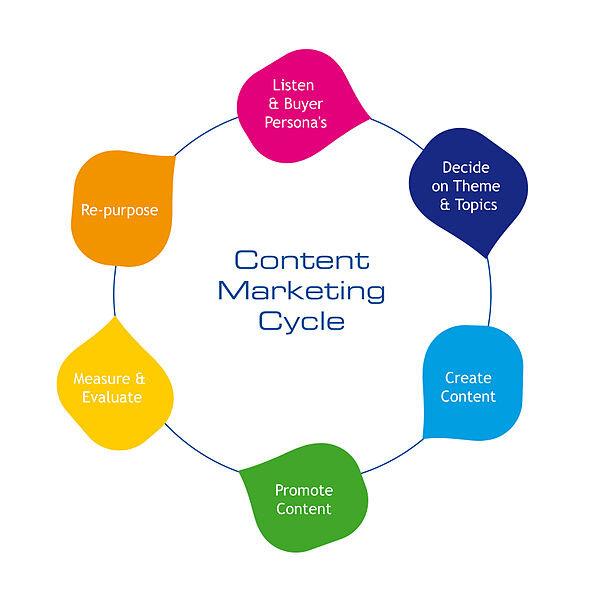
Developing a Robust Content Marketing Strategy
When it comes to driving traffic to your online store, a well-crafted content marketing strategy is your secret weapon. It’s not just about promoting products; it’s about engaging your audience. By producing valuable content, you not only establish your brand as an authority in your niche but also create numerous touchpoints that can lead to conversions.
Start by defining your target audience. Who are they? What are their interests and pain points? Use this information to tailor your content. Understanding your audience helps you create relevant content that resonates with them. Consider building detailed customer personas to streamline this process.
Next, focus on content formats. Variety can spice up your marketing mix. Here are some formats to consider:
- Blog Posts: Informative articles that answer common questions.
- Videos: Engaging visual content showcasing products or tutorials.
- Infographics: Easy-to-digest visual representations of data.
- Social Media Posts: Share snippets and promote engagement.
Incorporating SEO best practices into your content is vital. Use relevant keywords naturally within your content to improve visibility. Remember to optimize titles, meta descriptions, and image alt texts. This not only helps in ranking higher in search engines but also attracts qualified traffic to your site.
Moreover, building a content calendar ensures consistency and keeps your audience engaged. Plan your topics ahead of time, and don’t hesitate to align your content with seasonal trends or events relevant to your industry. A simple table can help you visualize your content plan:
| Month | Content Topic | Format |
|---|---|---|
| January | New Year Sale Tips | Blog Post |
| February | Valentine’s Day Gift Ideas | Video |
| March | Spring Trends | Infographic |
analyze your results. Use tools like Google Analytics to track the performance of your content. Look for metrics such as traffic sources, bounce rates, and conversion rates. This data will help you refine your content strategy over time, ensuring that it remains effective and aligned with your business goals.
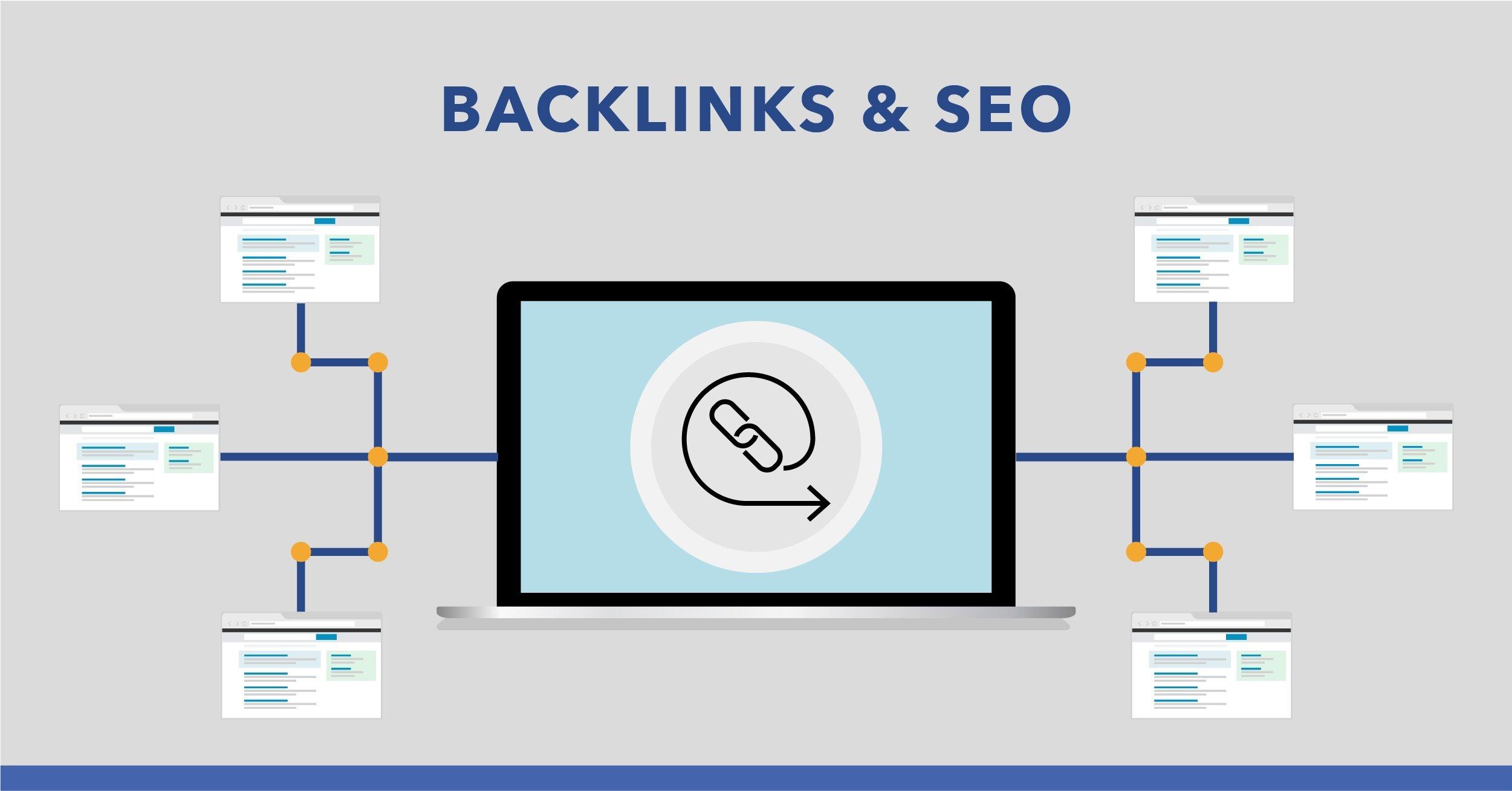
The Power of Backlinks and How to Acquire Them
Backlinks are often touted as the lifeblood of SEO, especially for ecommerce websites striving to climb the search engine rankings. They serve as a vote of confidence, indicating to search engines that your content is credible and valuable. The more quality backlinks you acquire, the more likely your online store will be perceived as an authority in your niche, ultimately leading to increased organic traffic and better conversion rates.
So, how can you effectively build a robust backlink profile? Here are some proven strategies:
- Guest Blogging: Reach out to popular blogs in your industry and offer to write informative articles in exchange for a backlink to your site. This not only helps acquire backlinks but also positions you as an expert.
- Influencer Collaborations: Partner with influencers who resonate with your brand. They can share your products with their audience, often including links back to your site.
- Resource Pages: Identify resource pages relevant to your industry and suggest your ecommerce store as a valuable addition.
- Social Media Engagement: Share your content across various social media platforms. While these links may be nofollow, they can lead to organic backlinks by increasing visibility.
- Broken Link Building: Find broken links on other websites that relate to your products. Reach out to the site owners, letting them know and suggesting your link as a replacement.
When building backlinks, focus on quality over quantity. A single link from a high-authority site can outweigh numerous links from low-domain authority sites. To gauge the quality of a site, consider factors such as domain authority, relevance to your niche, and traffic levels.
Additionally, monitor your backlink profile using tools like Google Search Console or Ahrefs. This helps you understand which links are driving traffic and which may require disavowing due to poor quality. Keeping a clean backlink profile not only boosts your SEO but also protects your site’s reputation.
| Backlink Strategy | Benefits |
|---|---|
| Guest Blogging | Establishes authority; builds relationships |
| Influencer Collaborations | Access to new audiences; social proof |
| Resource Pages | High-quality backlinks; relevance |
| Social Media Engagement | Increased visibility; potential traffic |
| Broken Link Building | Helps others; earns quality backlinks |
Ultimately, the power of backlinks lies in their ability to enhance your online presence. By actively implementing these strategies, you’ll not only improve your search rankings but also create a more credible and trustworthy brand. So, roll up your sleeves and start building those invaluable connections! Your ecommerce store’s success depends on it.

Implementing a User-Friendly Navigation System
One of the cornerstones of a successful ecommerce site is a navigation system that feels intuitive and effortless for users. A well-structured navigation not only enhances the user experience but also contributes significantly to SEO. Here are some essential elements to consider when designing your navigation system:
- Clear Categories: Organize your products into easily identifiable categories. This helps users find what they need without wandering aimlessly. Aim for 3-7 main categories to keep things simple.
- Breadcrumb Navigation: Implement breadcrumb links so users can trace their path back through your site. This not only aids navigation but also improves SEO by providing context to search engines.
- Search Functionality: Incorporate a prominent search bar that allows users to quickly locate specific items. This can significantly reduce frustration and time spent searching.
- Responsive Design: Ensure that your navigation is mobile-friendly. Many users shop on their phones, and a responsive layout can make or break their experience.
Additionally, consider the following features to enhance your navigation system:
- Hover Menus: Utilize hover menus to display subcategories without requiring a click. This allows users to see more options at a glance and encourages deeper exploration of your site.
- Filters and Sorting Options: Implement filters that allow users to sort products by attributes like price, color, or size. This feature can help users quickly narrow down their choices.
- Consistent Layout: Keep your navigation elements consistent across all pages. Whether it’s a sticky menu or a standard top bar, ensuring familiarity can lead to a smoother shopping experience.
To further illustrate the impact of a user-friendly navigation system, here’s a simple table comparing two different navigation styles:
| Navigation Style | User Experience | SEO Impact |
|---|---|---|
| Cluttered Menu | Poor; users feel overwhelmed. | Negative; search engines struggle to index. |
| Clean, Structured Menu | Excellent; easy to find products. | Positive; improves crawl efficiency. |
Remember, the goal is to guide users seamlessly through their shopping journey. By implementing thoughtful navigation strategies, you not only enhance user satisfaction but also encourage longer site visits and increased conversions. Prioritizing user experience in your ecommerce design will pay dividends in customer loyalty and search engine rankings.

Monitoring Your Analytics for Continuous Improvement
To truly enhance your ecommerce SEO strategy, nothing beats the power of data. By keeping a close eye on your analytics, you can uncover insights that drive continuous improvement. Here are some key aspects to monitor:
- Traffic Sources: Identify where your visitors are coming from. Are they finding you via organic search, social media, or referral links? Understanding this can help you focus your efforts on the most productive channels.
- User Behavior: Analyze how users navigate your site. Are they engaging with your content, or bailing out on the homepage? Using heatmaps can reveal where users click the most, allowing you to optimize layout and content placement.
- Conversion Rates: Track how many visitors make a purchase compared to the total number of visitors. A low conversion rate may indicate issues in your sales funnel that need addressing.
Another vital element of your analytics is understanding keyword performance. Monitor which keywords are driving traffic to your store and how they rank over time. If you’re seeing drops in ranking for crucial terms, it might be time to revisit your keyword strategy and content optimization. Consider maintaining a simple table to keep track of this data:
| Keyword | Current Rank | Traffic Volume | Conversion Rate |
|---|---|---|---|
| Best running shoes | 5 | 800 | 15% |
| Men’s sneakers | 12 | 400 | 10% |
| Women’s athletic wear | 8 | 600 | 12% |
Don’t overlook the importance of site speed and mobile responsiveness. Use analytics tools to see how these factors impact your bounce rates. If your site takes too long to load or isn’t optimized for mobile, you risk losing potential customers before they even engage with your content.
consider establishing a consistent review process for your data. Set aside time each month to dive deep into your analytics reports. This ongoing commitment to understanding your metrics will allow you to spot trends, adapt your strategy, and ultimately enhance your store’s performance.
By embracing analytics as a core component of your ecommerce strategy, you’re not just tracking numbers—you’re unlocking the potential for growth and improvement. Dive in, analyze, and watch your online store thrive.
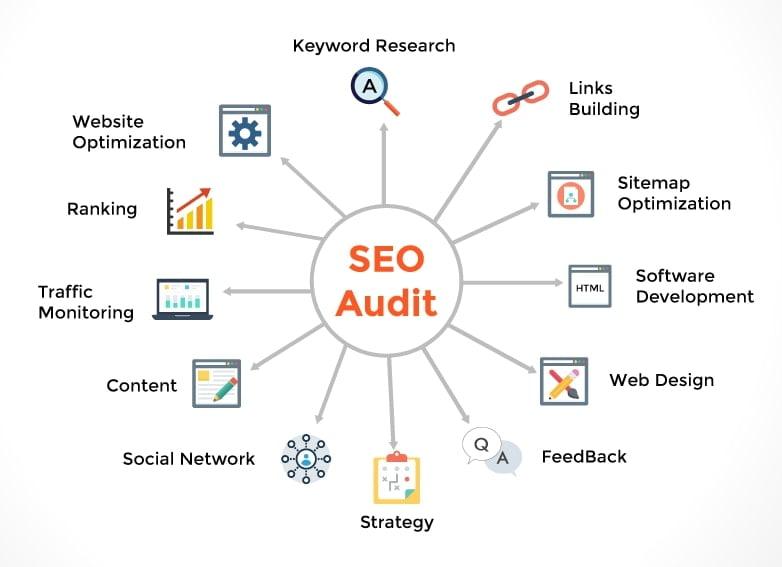
Staying Ahead with Regular SEO Audits and Updates
In the fast-paced world of ecommerce, staying relevant and visible can feel like a constant race. But fear not—conducting regular SEO audits is your secret weapon for keeping your online store ahead of the competition. By systematically evaluating your site’s performance and making necessary updates, you can ensure that your ecommerce platform not only meets the current search engine algorithms but also exceeds customer expectations.
One of the first steps in an effective SEO audit is to analyze your website’s structure. Ensure that your URLs are clean and user-friendly, which makes navigation seamless for both users and search engines. Tools like Google Search Console can provide insights into which pages are performing well and which might need a little TLC.
Additionally, pay close attention to your on-page SEO elements. This includes optimizing title tags, meta descriptions, and header tags to incorporate relevant keywords naturally. You’d be surprised how often these basic elements get overlooked. After all, they serve as the gateways to your content, enticing customers to click through from search results.
Another critical aspect of your SEO audit should include a thorough examination of your content quality. Are your product descriptions engaging and keyword-rich? Are you offering valuable insights through blog posts or guides? Regularly updating and refreshing your content not only boosts SEO but also builds trust with your audience. Fresh, relevant content signals to search engines that your site is active and worth ranking higher.
To make your products more discoverable, consider the importance of image optimization. This often-overlooked element can significantly impact load times and user experience. Use descriptive file names and alt tags for your images, and compress them to ensure they don’t slow down your site. Remember, every second counts—both for SEO and for keeping potential customers engaged.
Moreover, the technical side of your site should not be neglected during an audit. Regular checks on your site speed can reveal areas that may need optimization. Tools like GTmetrix or PageSpeed Insights can provide actionable insights to help you enhance loading times, making your site more user-friendly and search-engine-friendly.
Lastly, don’t underestimate the power of link building. Conducting an audit allows you to find broken links that need fixing and identify opportunities for acquiring high-quality backlinks. Engage with other businesses in your niche, create shareable content, and strive for guest blogging opportunities to establish your authority and improve your site’s visibility.
| SEO Audit Action | Outcome |
|---|---|
| Analyze website structure | Improved navigation and user experience |
| Optimize on-page elements | Higher search visibility |
| Refresh content regularly | Increased engagement and trust |
| Optimize images | Faster load times |
| Check site speed | Better user experience and rankings |
| Build high-quality backlinks | Enhanced authority and traffic |
By committing to regular SEO audits and updates, you not only bolster your online presence but also pave the way for long-term success. The ecommerce landscape is ever-evolving, and staying ahead means being proactive about your strategies. Remember, a well-optimized online store is not just about meeting current standards but setting them. So roll up your sleeves and dive into the world of audits; your future customers are counting on you!
Frequently Asked Questions (FAQ)
Q&A for “Ecommerce SEO Checklist: 16 Optimizations for Your Online Store”
Q1: Why is SEO so important for my online store?
A1: Great question! SEO, or Search Engine Optimization, is crucial for your online store because it helps improve your visibility on search engines like Google. When your store ranks higher, you attract more organic traffic, which can lead to increased sales. Essentially, good SEO makes it easier for potential customers to find you when they’re searching for products you offer.
Q2: What’s the first step I should take to optimize my ecommerce site?
A2: Start with keyword research. You need to know what terms potential customers are using to search for your products. Tools like Google Keyword Planner or Ahrefs can help you identify these keywords. Once you have your list, you can incorporate them into your product descriptions, titles, and meta tags to ensure your store aligns with what customers are looking for.
Q3: How important are product descriptions for SEO?
A3: Product descriptions are super important! Not only do they help inform your customers about what you’re selling, but they also play a significant role in your SEO strategy. Unique, detailed descriptions that include relevant keywords can improve your rankings. Avoid copying manufacturer descriptions; instead, create engaging content that highlights the benefits of your products.
Q4: Should I use images on my ecommerce site?
A4: Absolutely! Images are a crucial part of any ecommerce site. They capture attention and help customers visualize your products. However, don’t forget to optimize them! Use descriptive file names and alt tags that include relevant keywords. This not only helps with SEO but improves accessibility for users with visual impairments.
Q5: How do I optimize my online store’s URLs?
A5: Great question! Clean, descriptive URLs are essential for both SEO and user experience. Instead of using long, complicated URLs with random characters, create short, keyword-rich URLs that clearly indicate the content of the page. For example, use “yourstore.com/red-dress” instead of “yourstore.com/product123”.
Q6: What role does site speed play in SEO?
A6: Site speed is crucial! A fast-loading website provides a better user experience and can positively impact your rankings. If your site takes too long to load, potential customers may leave before it even finishes. Use tools like Google PageSpeed Insights to analyze and improve your site speed.
Q7: Can I ignore mobile optimization?
A7: Not at all! With more people shopping on mobile devices than ever, mobile optimization is a must. Make sure your site is responsive and looks great on all screen sizes. Google also considers mobile-friendliness as a ranking factor, so ignoring it could hurt your SEO efforts.
Q8: How can I leverage customer reviews for SEO?
A8: Customer reviews can be a game-changer! They not only build trust with potential customers but also provide fresh content for your site. Encourage customers to leave reviews and display them on your product pages. Search engines love user-generated content, which can boost your rankings.
Q9: What’s the deal with backlinks?
A9: Backlinks are a vital part of SEO. They act as votes of confidence from other websites, telling search engines that your store is a trustworthy source. Focus on building quality backlinks through guest blogging, collaborations, or partnerships with influencers in your niche.
Q10: How often should I update my ecommerce site?
A10: Consistency is key! Regularly updating your site with new content, products, and blog posts can help improve your SEO. Search engines favor fresh content, so make it a habit to analyze and refresh your existing pages, add new products, and engage with your audience through blogs or tutorials.
Q11: Is it beneficial to have a blog on my ecommerce site?
A11: Definitely! A blog can drive traffic to your site and establish you as an authority in your niche. By creating valuable content that addresses your customers’ questions or interests, you can attract organic traffic and improve your SEO. Plus, it gives you more opportunities to include those important keywords.
Q12: What are meta tags, and why should I care?
A12: Meta tags are snippets of text that describe a page’s content; they help search engines understand what your page is about. Pay special attention to your title tags and meta descriptions—they should be compelling and include relevant keywords. Well-crafted meta tags can improve your click-through rates, attracting more visitors to your site.
Q13: How can social media impact my ecommerce SEO?
A13: Social media can significantly boost your ecommerce SEO! While social signals don’t directly impact rankings, they can drive traffic to your site and increase brand awareness. Share your products, promotions, and blog content on social platforms to engage with your audience and encourage sharing.
Q14: Should I focus on local SEO for my online store?
A14: If you have a physical location or offer local services, then yes! Local SEO can help you attract customers in your area. Make sure to optimize your Google My Business listing, gather reviews, and use local keywords to improve your visibility in local search results.
Q15: What’s the biggest mistake I can make with ecommerce SEO?
A15: One of the biggest mistakes is not tracking your results. SEO isn’t a set-it-and-forget-it process; you need to monitor your performance regularly. Use tools like Google Analytics and Google Search Console to track traffic, conversions, and keywords. This data will help you refine your strategy and improve your store’s visibility over time.
Q16: How long does it take to see results from SEO optimizations?
A16: SEO is a long-term game. While some changes may lead to immediate improvements, most optimizations can take several months to show significant results. Be patient and consistent with your efforts, and remember that good SEO practices can lead to sustainable growth for your online store.
Utilizing this Q&A format not only highlights key aspects of your ecommerce SEO checklist but also engages readers in a direct and conversational manner. Let’s get your online store the visibility it deserves!
In Retrospect
And there you have it—our comprehensive Ecommerce SEO Checklist featuring 16 essential optimizations to elevate your online store! We understand that navigating the world of eCommerce can be overwhelming, but implementing these strategies doesn’t have to be. Each optimization is a step toward not just increasing your visibility in search engines, but also enhancing the overall experience for your customers.
Remember, SEO is not a one-time task; it’s an ongoing journey. By continuously refining your approach and staying updated with the latest trends, you’ll not only boost your rankings but also foster loyalty among your shoppers. So, grab your checklist and start making those tweaks today!
The potential for growth is immense, and you have the tools at your fingertips to make it happen. Don’t let your competition leave you in the dust—take charge of your online presence and watch your store thrive. Happy optimizing!



